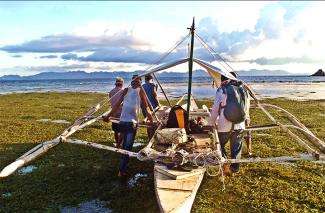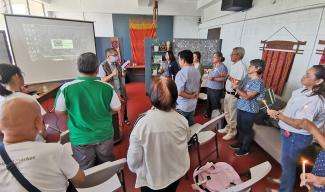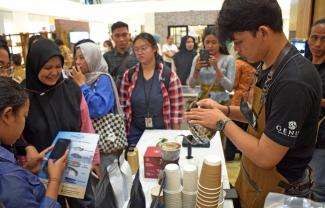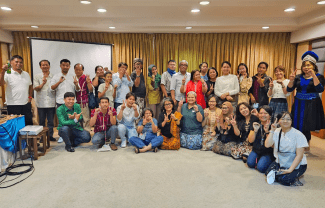The Early Recovery and Resilience Building (ERRB) Project is The Samdhana Institute's modest contribution to the overall recovery and rehabilitation efforts to the massive destruction brought about by Super Typhoon Haiyan in November 2013.
The Calamianes Group of Islands, particularly the municipalities of Coron, Culion, Busuanga and Linapacan, in Northern Palawan, Philippines, was one of the severely damaged areas, affecting many island barangays. Homes and livelihoods were destroyed and lost. In a rapid survey, two weeks from the disaster, Samdhana enlisted a partial number of 2,356 households needing relief and recovery assistance.
The ERRB Project aims to facilitate early recovery assistance mainly through livelihoods and capacity-building. The interventions are directed towards the Tagbanua communities in the Calamianes. The recovery efforts are in partnership with the local Tagbanua associations or Indigenous Peoples Organizations (IPOs), and coordinated with the multi-stakeholder post-Haiyan players.
The Tagbanua tribes in the Calamianes are primarily seafarers. The majority rely on the sea for their livelihood. Other income-generating activities are rice farming and agriculture; however, planting is done mostly only during the wet season. Tagbanua women do handicrafts and mat weaving.
Life for the Tagbanua communities has been difficult even before the onslaught of STY Haiyan. Most are artisanal fishers trying to make both ends meet on a daily basis. Families that are a little better off produce dried fish, seaweeds (tambalang) and live fish for trade. Unfortunately, the distance of communities from the mainland, difficulty in accessing the market, and limited education of the people have led to local fishers becoming prey to business traders who earn more profits, while the islanders continue to struggle from their meager income.
Calamianes Group of Islands, Palawan, The Philippines
Living in the Calamianes Islands is geographically challenging since the distant small islands and remote coastal areas are far from town centers, and consequently far from government basic services, educational services and economic opportunities. The devastation brought about by STY Haiyan made life even more difficult. Recovery was uncertain right after the disaster.
Samdhana's approach is to work directly with community members and local associations, building from their normal practices, assets, and traditional knowledge. The targeted Indigenous community beneficiaries have the primary choice in determining their livelihood recovery option. The design of the ERRB project interventions began with community members articulating their own vision for sustainability.
Capacity-building, especially in the areas of indigenous governance and strengthening of local associations, basic management and leadership skills, and livelihood improvement skills, are part of the efforts to build resilience of local communities.
It has been a year since the unforgettable disaster struck, and almost a year working with the Tagbanua people for their recovery, not simply of livelihoods and incomes, but more for an improved state of life and better sense of being able to face up to other disasters that may come. Through the ERRB Project facilitating the support and generosity of Partners and Donors and providing the vehicle for participation of the Tagbanua people, many have been accomplished, and yet there is much more to do.
Packaged in a 24-page, this coffeetable book project captures the moments and stories of the communities, from their uncertainties and distresses, and towards the emergence of their courage to pick up the pieces and take their steps forward.




